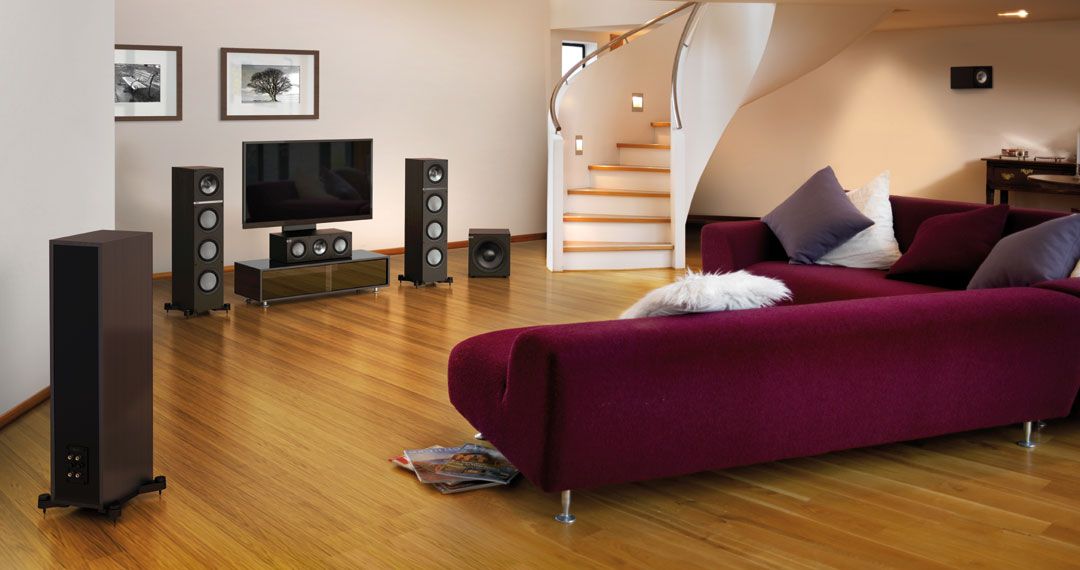
AV 101: Session 1 - Distributed Audio vs. Surround Sound
Here at AV Enthusiast, we understand that many of the terms used in the Audio Video industry are confusing and not always very intuitive. Often this can lead to misunderstanding and miscommunication on what your needs and wants for your home can be. As is often said, “Knowledge is power”, so we want to help all of our readers be more knowledgable of A/V terms. This article will be the first in a series that attempt to explain industry terminology in a way that everyone can understand. To help accomplish this, we are proud to bring you our new blog series, AV 101. Today we kick it off with Session 1 - Surround sound vs. Distributed audio.
SEE MORE: How to Optimize Your Home Theater Surround Sound System
When consulting with clients on what they are looking for in their home audio system, people often say they want “surround sound”. However, when we begin to delve deeper into exactly what they are looking for they tell us they want speakers and music in multiple rooms around their home. While we can certainly see how that can be described as surround sound, that isn’t the term used in the AV industry. What these customers are looking for is distributed audio or whole house audio. So what exactly is distributed audio?
To put it simply, distributed audio is the ability to play music in multiple locations in your home or business. It can be as simple as multiple sets of speakers connected to an audio receiver with manual volume controls in each room. More robust systems give you the ability to play multiple sources in multiple rooms all wirelessly including streaming all of your favorite music services like Pandora, Sirius XM, Spotify, etc. These are often controlled using your smart phones and tablets and have the ability to add zones simply without having to run large amounts of wires or cables across the home or business. This can best be described using an example:
You come home from work and you hear your teenage child listening to the latest Drake album loudly all across the house while they work on their homework in their bedroom. Not being a big fan of hip-hop after a long day on the job, you grab your iPad and fire up an app. You quickly limit their music selection to their bedroom and drop the volume to something lower than the sound of a jet engine. You open up your favorite Pandora channel, 80’s Pop, and listen to Prince’s Purple Rain album in your bedroom as you change and then the kitchen and living room while you prepare dinner. At 6 the local news comes on so you pipe the television audio into multiple locations so you can follow the latest info on the Presidential race and as the family sits down for the evening meal, you turn off all the audio in the entire house with just a few taps on your cell phone so everyone can talk about their day. This is much easier than you think and systems like these grant you much greater flexibility.
Ok you ask, if that is distributed audio, what the heck is surround sound? Surround sound is the use of multiple speakers and audio channels to surround the listener in sound, most often for television and movies. It utilizes speakers and subwoofers arranged around the listening area to make it sound like the sounds are moving throughout the room. Think of the last time you went to the movies and a plane flew overhead or a gunshot whizzed past the hero. You heard these things move around the theater. We can re-create that experience in your home. Think of watching Jason Bourne race across Moscow being chased by the police and the squeals of the tires and gunshots come from all around you. Being able to hear the sirens coming from behind you as you watch him try to escape. The explosions can shake the couch and the audio make you think you are actually there.
Surround sound comes in many different varieties, and while we won’t go into the details in this article, you may hear terms like Dolby Digital, 5.1, 7.1 or Atmos. These all describe different types of surround sound and while they use different sources and change the number and placement of speakers, they all attempt to do the same thing, immerse you in the watching experience with different levels of performance.
Well, hopefully this post has helped you better understand the difference in distributed audio and surround sound and will allow you to make better decisions regarding your wants and needs. Feel free to contact us here at AV Enthusiast and we can schedule a meeting and/or walkthrough to discuss and explain any of your audio and video needs. You can contact me at 256.229.4283 or

Elevate your family’s entertainment experience with an indoor or outdoor home theater!

Elevate your game day experience with ultimate Home Tech!

Ringing in the New Year with Innovation and Connection

The Ultimate Home Theater and Smart Family Room Guide

